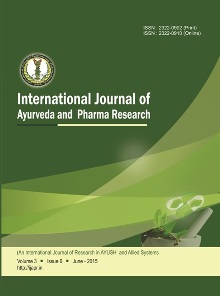Role of Panchakarma in Management of Cancer Patients
Abstract
Classical Ayurveda texts have several references to cancer. Charak and Sushrut Samhita described the equivalent of cancer as 'Granthi' (benign neoplasm) and 'Arbuda' (malignant neoplasm). Arbuda is the most accurate term for a cancerous malignancy. Gulma is referred to describe any palpable hard mass over abdomen which could be benign or malignant. In modern terminology, cancer is a group of malignant diseases with characteristics such as abnormal cell proliferation, lack of controlled growth, ability to spread to distant sites and evasion from natural cell death process. Treatment of cancer is based on excision, chemotherapy, radiotherapy and immunosuppressants. These treatments do provide benefits but also decreases the immunity leading to many side effects such as anaemia, loss of hair, recurrent infections, constipation, delirium, mental trauma, etc. Ayurveda explained that aggravated Vata and Pitta dosha by vitiating the Rakta, Mansa and Meda dhatu with the Kapha dosha gives rise to formation of round, knotty, elevated swelling. Removing these aggravated Doshas from the body through Shodhan karma is an effective method of treatment. Main aim of this article is to review the role of Panchakarma as an effective and supportive treatment as well as managing side effects of chemo-radio therapy. Basti karma used as a major therapeutic technique in combating cancer while other Panchakarma therapies plays a major role in management of significant cancers and eradicating all the side effects of chemo-radio therapy. Besides them, Yoga, Pranayama, Yagna therapy, meditation also helps in detoxifying the body thus improving quality of life.

Copyright (c) 2025 International Journal of Ayurveda and Pharma Research

This work is licensed under a Creative Commons Attribution-NonCommercial-ShareAlike 4.0 International License.


